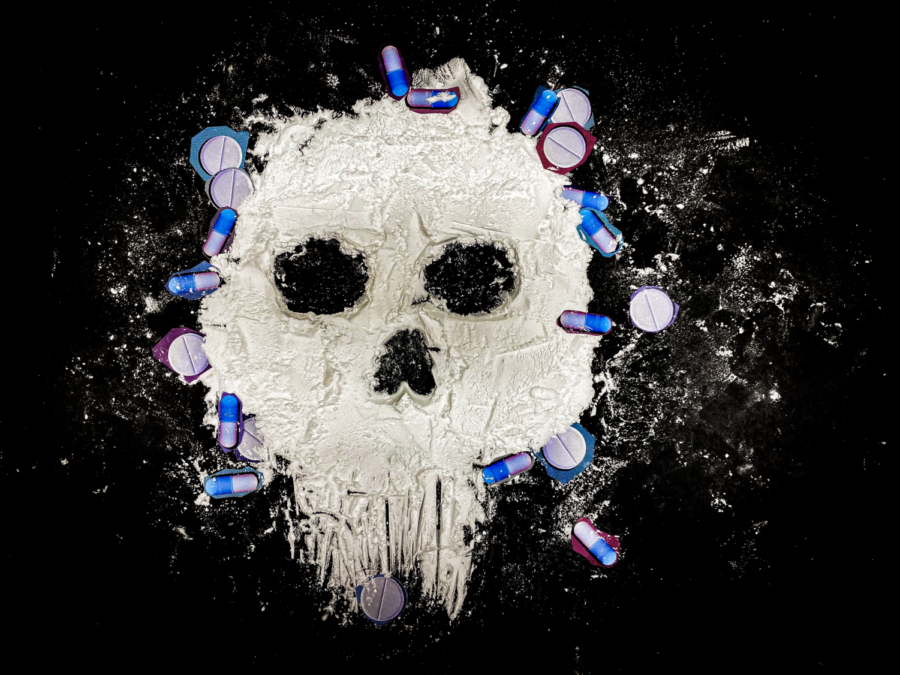This abridged version of this article appeared in the Nov. 2022 print edition. This is an uncut version.
In late September, the local media was rocked with news that hit a little too close to home. At least seven LAUSD students are known to have overdosed on the drug fentanyl. 15-year-old Melanie Ramos, a student at Bernstein High School in Hollywood, died, raising many questions surrounding the safety of students and their exposure to drugs.
For students, the word ‘drugs’ is often thrown around and can have a broad meaning. Fentanyl falls into this category. Most students really don’t know what fentanyl is or how dangerous it can be. “I just know it’s a strong drug that is super-addicting,” senior Brianna Carrillo, ASB vice president, said.
Fentanyl is an imitation opioid. Opioids are drugs made from the opium poppy plant containing chemical compounds used for physical and psychological pain relief.
Easily the most potent opioid, fentanyl can be 50 to 100 times stronger than morphine or heroin, making it extremely deadly. It is a synthetic drug, meaning it does not come from the opium poppy plant, but rather, is chemically produced in a lab.
Since fentanyl can be chemically produced, it is very inexpensive to make. Other, high-value prescription drugs can cost dealers tons of money. Often to save money, drug dealers mash cheap fentanyl into the shape of prescription pills, creating what is called a “fentapill.”
Students who buy the pills think they are just going to get high, but in reality, they can easily end up dead. The pills can vary in the amount of the drug they actually contain, so ingesting just a few extra grains can be the difference between life and death. In many cases, it is impossible to know if a pill contains fentanyl, or even how much without the use of a medical lab test.
In response to the fentanyl epidemic that is taking hold in LAUSD schools, Superintendent Alberto Carvalho announced several new strategies to address the crisis.
He has set a goal to supply all LAUSD schools with Narcan, a quick-acting nasal spray that counteracts the effect of an opioid overdose, by the end of October. Los Angeles School Police have already begun carrying Narcan on their person.
But the treatment is not a cure-all. Any person who has been administered Narcan still needs to be provided with immediate medical attention.
Side-by-side with Narcan, Superintendent Carvalho plans to launch a new ‘Make a Choice’ campaign which will provide schools with resources to educate students on the reality and risks of fentanyl. One component of the program will be student-to-peer counseling, where knowledgeable students will have sit-downs with other students to talk about fentanyl. Superintendent Carvalho feels that students will respond better by listening and talking to their peers.
“If they put the students first, one hundred percent it would be worth it,” senior Brianna Carillo said. “But right now the district wants to be seen as helpful versus if they are actually helping.”
Although the school has not had any overdoses, the administration is taking the issue seriously.
“I don’t necessarily see the district as doing this ‘just because,’” Principal Lourdes De Santiago said. “I genuinely think that our district is moving forward and making decisions in the best interest of our students and their families. Life happens so fast, and sometimes we don’t have time to plan ahead.”
In recent years, the district has used crisis and intervention counselors to allow students to share and seek counsel to address any trauma or struggles, which includes Fentanyl and drug addiction.
Currently, the school has two Psychiatric Social Workers (PSWs), Ms. Karina Lares, and Ms. Kat Stockly, to help students that may be struggling with addiction.
“We support recent efforts to address this ongoing issue,” both PSWs said in an email statement. “The accessibility to Narcan in schools can be life-saving. However, this alone does not solve the problem at hand. Investing in preventative efforts such as educating the school community as a whole is imperative in raising awareness on this issue.”
With the programs being implemented so recently, some district policies and procedures have yet to be determined.
“Even sometimes when we trust something, the outcome is not what you thought it would be,” Principal De Santiago said. “The world is struggling right now, and we have to look out for one another. If you see something, say something.”



